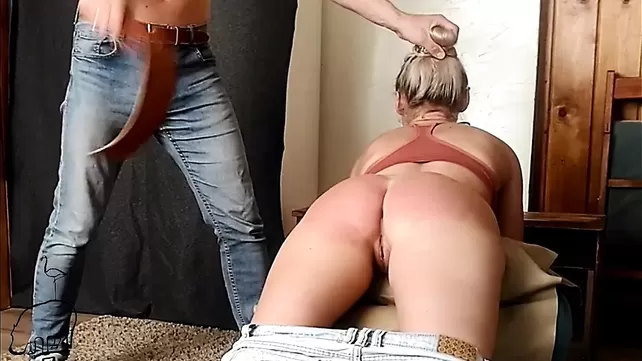What Is Adult Spanking?
 Many people consider spanking to be a fundamental part of their kinky-sexuality. Spanking can be a form of power exchange or it can be used to play with other erotic concepts. BDSM has attracted the attention of sex therapists, psychologists, and artists.
Many people consider spanking to be a fundamental part of their kinky-sexuality. Spanking can be a form of power exchange or it can be used to play with other erotic concepts. BDSM has attracted the attention of sex therapists, psychologists, and artists.
The study found that spanking correlates empirically with physical and emotional abuse items and accounts for additional model variance in the relationships with adult mental health problems, including suicide attempts, moderate to heavy drinking and street drug use. It may also lead to sadomasochistic tendencies.
It’s a form of punishment
Spanking is when you use an implement to strike someone else (such as a cane or paddle). It is a form of corporal punishment and can be used to punish adults and children. It is commonly practiced in homes, schools and penal institutions, although it is prohibited in some countries. Adults who enjoy spanking often use it for sexual arousal. It can also be used as a form of bondage between two people. During erotic slapping, the brain releases “love hormone” oxytocin. This chemical has a variety of physical, emotional and mental reactions.
Research on the relationship between childhood maltreatment and poor health outcomes revealed that spankings during childhood were linked to a variety problems in adulthood. Specifically, these included depressed affect, suicide attempts, moderate to heavy drinking and street drug use. The grouping of the items into a factor structure revealed that the association was independent from other factors such as physical/emotional abuse and social demographic characteristics.
It is important for both the spanker and spankee to be completely consensual. This includes discussing the intensity and duration, as well as the tools and the state of dress. It is important that anyone who witnesses or hears the spanking agrees to it.
It’s a type of bondage
For a surprising number of people, spanking is a form of bondage and sexual pleasure. These people, called spankos, center their erotic lives around this act and are not interested in more conventional forms of sex. Sigmund freud studied the link between childhood spankings and later sadomasochistic desires. In modern times, this topic has exploded ever since 50 Shades of Grey brought BDSM to the forefront.
For many adult spankos, the act of spanking triggers a series of physical, mental and chemical reactions in the body. Specifically, when a person is touched in a nonsexual way, the brain releases oxytocin, which is known as the “love hormone.” Spanking triggers this response. In addition, when a person is physically aroused, their blood pressure increases, which can lead to feelings of euphoria and arousal.
It is important that the spanking scene is agreed upon by both parties. The spanker and spankee have to agree on the intensity, duration, implements, state of dress, positions, and verbiage. It is also important to keep the spanking scene private so that unaware individuals cannot see or hear it. This is a violation of privacy, and it’s illegal.
It’s a form of control
Spanking can be a form or control and, like all forms of controlling, it may also be sexually stimulating. Remember that you can only practice your fantasies if the other person is willing and consenting. It is also important to understand that the fetish is intrinsically a sexual act, and it is inappropriate to do so in public. This includes, but is not limited to, spanking your coworkers at work or spanking people who are not part of your fetish.
Moreover, erotic spanking often involves sexual roleplay or incorporates the use of apparatuses. These may include adapted/improvised devices, such as vaulting-bucks, that were used in non-erotic school slipperings and canings. Erotic spanking may also involve sexually-based scenarios, such as Teacher-Student roleplay.
Historically, erotic spanking has been associated with poor adult mental health outcomes including depressive affect and suicide attempts. These associations persist after accounting for Physical/Emotional abuse experiences and account for additional model variance. However, it is unclear if it should be considered an Adverse Childhood Experience (ACE). This study examines 1) if spanking is empirically associated with physical and emotional abuse, and 2) if it has similar associations to adult mental health issues.
It’s a discipline
Many parents spank their children as a way to discipline them. It is a common form of discipline that involves hitting or slapping the child’s buttocks. Although a spanking does not hurt physically, it can have a psychological impact on the child. It can also cause mental health issues, such as depression and PTSD. It is important that you understand the dangers associated with spanking so that you can protect your child.
Internet has made it easier than ever for people with different interests and knowledge to explore content related to erotic spanking. This has led an explosion of spanking video, blogs and websites which discuss kink play that involves spanking.
It is imperative that the spanker and the bottom be fully consented to the scene. Before the spanking begins, all aspects of the spanking must be agreed upon. This includes the intensity, duration, tools, state of clothing, position, and verbiage. It is also important to consider if the scene will be foreplay or the event itself and how the scene will end (corner time, aftercare and so forth).
Pleasure-based queer kink educator Lateef Taylor says that the difference between just slapping your boo’s rear-end and spanking therapy is intention. She says that many people talk about spanking’s therapeutic benefits, but never explain how to do it safely. In contrast to real therapy, spanking usually does not involve a licensed marriage or family therapist.
